
It was bittersweet flying back into Yangon. Firstly, sweet because we get to explore the capital city of Myanmar and observe the stark contrasts between city and villages. Secondly, bitter as it meant it was our last stop before returning back to Malaysia en route to Brisbane.

We walked around Chinatown many times for feeds, pecking on fruits, sculling glasses of sugarcane juice (It was 40c a glass – at home I pay $5), munching on skewers of BBQ and enjoying Burmese salads.

The architecture of Yangon was very rundown colonial.
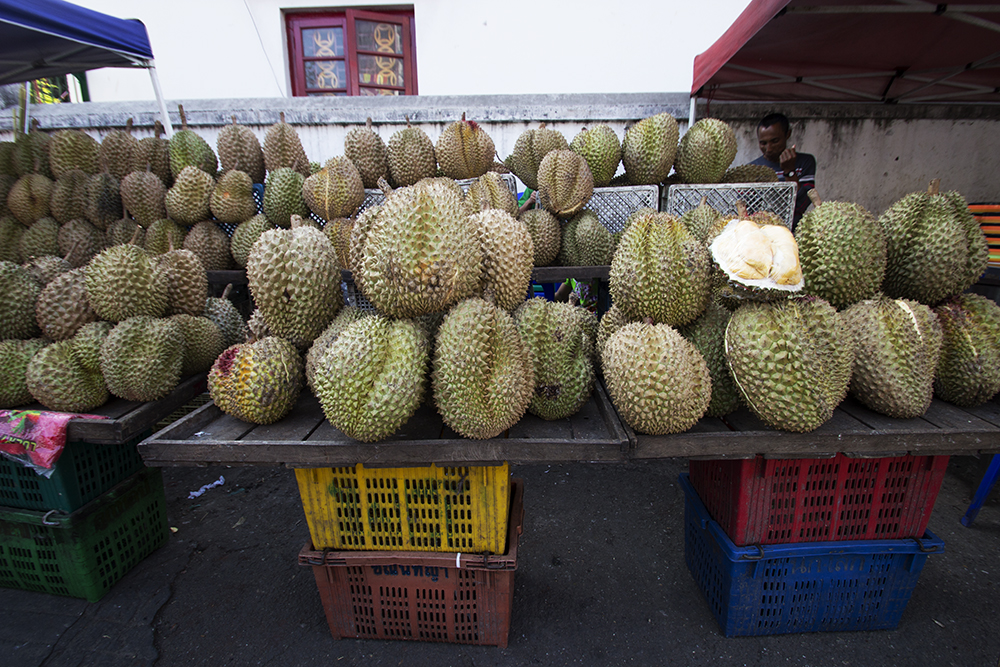

Chiseled coconuts

We then headed to Scott Market (Bogyoke Market) to grab some final souvenirs and spend the rest of our money. It was so easy to spend hours or even days here as there was just stall after stall of different crafty goods. The best thing about Myanmar was that all their souvenirs were man made, except for the large import from Thailand for bags and clothes. I usually collect a shot glass from each country I visit but with Myanmar I couldn’t find any. The country was just way too raw for something so touristy – so I made do with a lacquerware tea cup.
I also went nuts on crockery, I splurged on jade, ruby, sapphire pendants for my mum, silverware, stone carvings and petrified wood. Petrified wood was everywhere in Myanmar – I think it’s been the most recent craze and discovery adding to the list of natural resources in Myanmar. Petrified wood is when the wood becomes fossilized and turned into stone. It usually happens when trees were victim to avalanches and got buried for years and years so that it is starved from oxygen, the main ingredient to rotting (needs an anaerobic environment – thanks to high school chemistry class). Then the groundwater surroundings rich in dissolved solids replace the organic matter with things like silica, calcite, pyrite, opal and other inorganic matter. Fast forward millions of years and you have petrified wood, preserved in all its details even tree rings. The nicer pieces were of course out of my budget but I had to get a little something to remember Myanmar by. Loads of tourists from places like China come down to Myanmar to buy petrified wood and quality woodwork like teak. I figured it was affordable now, but one day it might become rare. When I returned to Malaysia, I was regretting supporting the industry as there are a lot of illegal mines in Myanmar where villages have deserted their previous occupations and are risking their lives to dig up petrified wood. They are attracted to the better pay but I really wonder what the safety precautions in place would be. Reminds me of the illegal tin mines in Indonesia.

A lady giggled as she put thanaka paste all over my face. Other local ladies gathered to see it on a foreigner and gave me smiles and nods of approval.

These guys were doing a lot of heavy loading and tradie work. I just couldn’t believe they were doing it all in their longyi skirts and thongs!

We then headed to Shwedagon Pagoda, probably Yangon’s best attraction on offer. It was a beautiful space surrounding a large golden stupa which apparently uses tonnes of gold to give it its lustre. Underneath the stupa, laid structures and structures of donated jewelry, but we weren’t able to see that. We were shown photographs of them. Unfortunately, the golden stupa was getting renovated when we visited but we were still able to enjoy the underlying beauty.
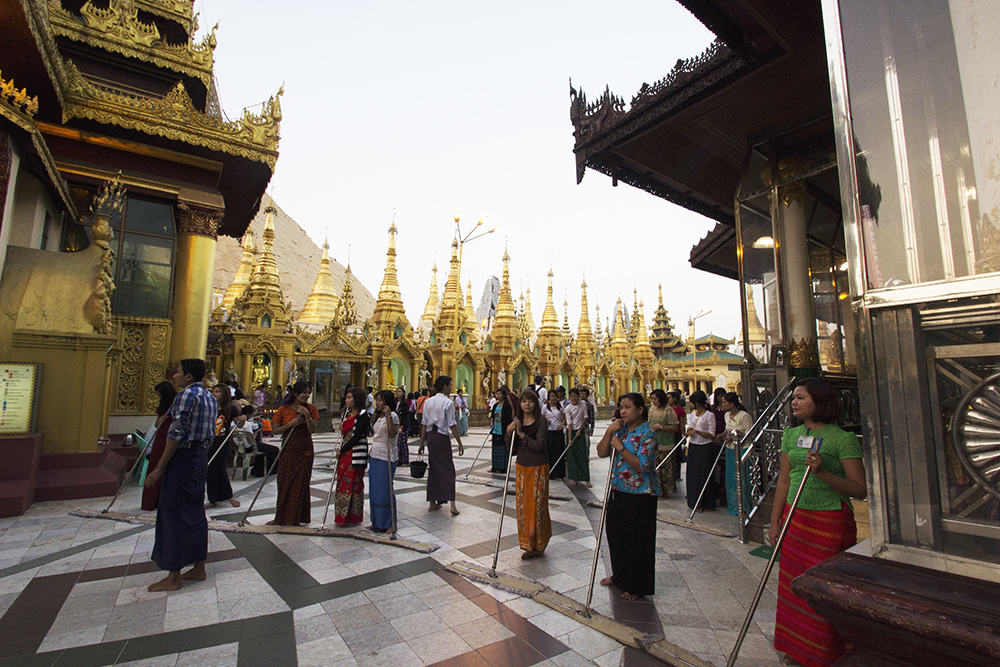
No shoes are ever allowed in the pagodas throughout Myanmar. Even in Bagan’s archaeological ruins we had to take our shoes off. There was a line up of men who would sweet the floors followed by these women who followed behind mopping away at Shwedagon Pagoda.
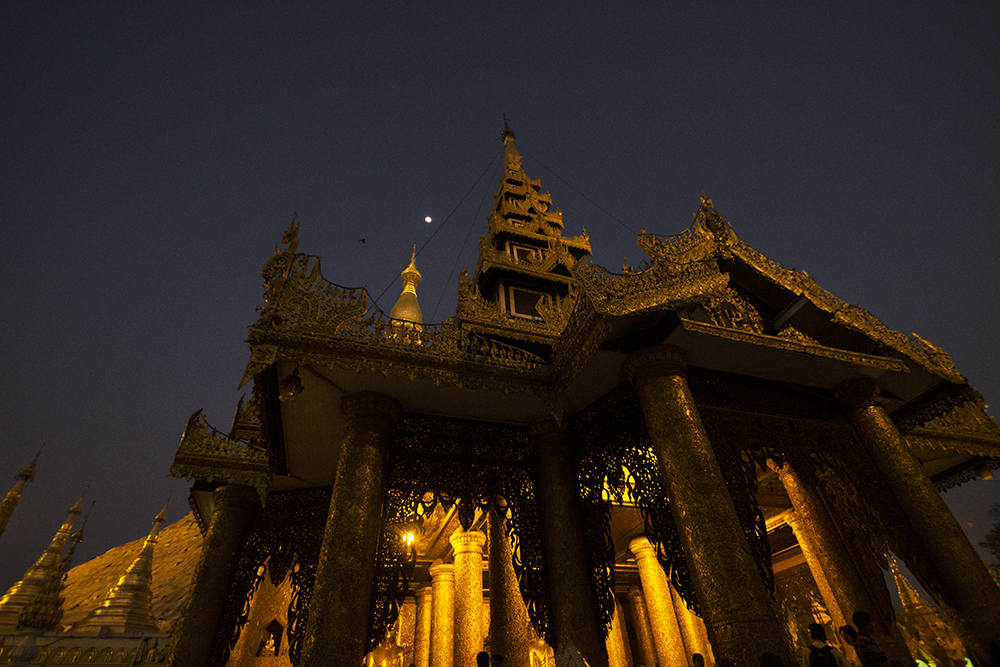
We decided to get a tour guide so that we could be more informed about the worship area. We had an adorable old man who had the best English we encountered throughout our whole journey in Myanmar.

I can’t recall but these oil candles took ages to fill up and then they were left to burn for weeks once the sun went down.
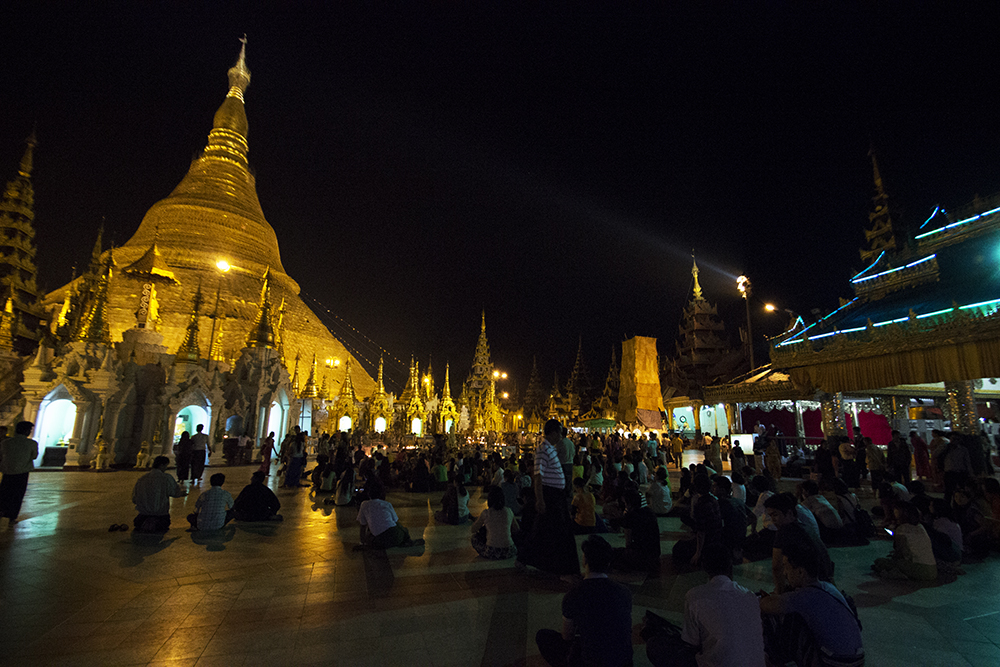
Shwedagon Pagoda is almost both a worship area as well as a hangout place for locals. This pagoda is over 2,500 years old and is apparently the most sacred.

We were taught that in Theravada Buddhism, Burmese Buddhists must learn which day of the week they were born. In their calendar, there are actually 8 days in a week with Wednesday split into two days from 6pm to midnight. Knowing which day you were born allows you to know which planetary post to pray to which is scattered around the Pagoda.
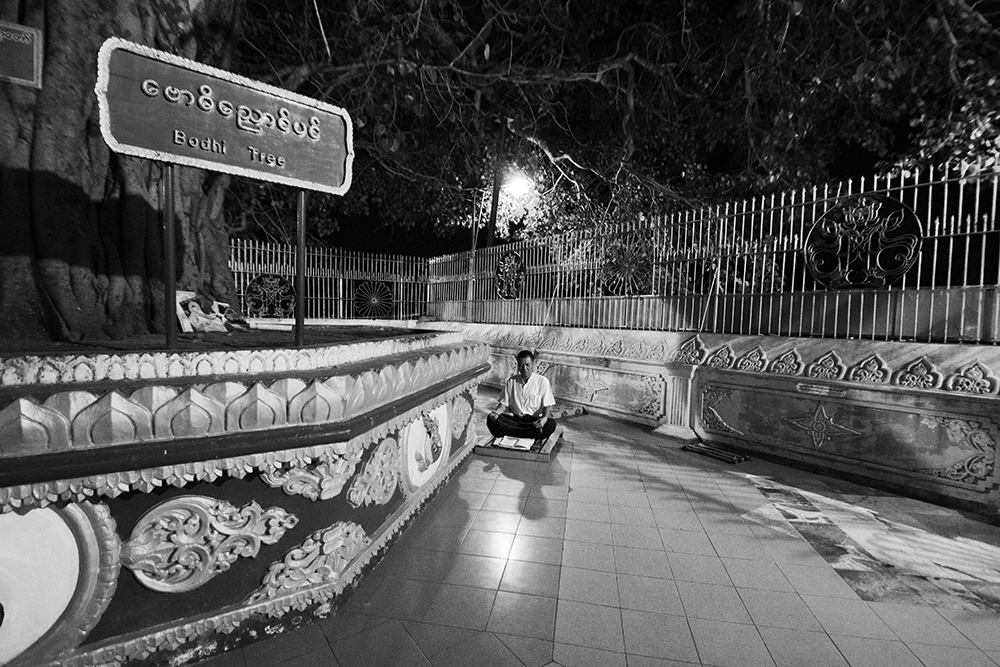
Apparently this Bodhi tree was seeded by the original Bodhi tree located at Bodh Gaya in India which Buddha is said to have achieved enlightenment.

Guava with plum salt is such a nostalgic childhood memory of mine! There were food markets in Chinatown every night after 5pm.

I have no idea what these crustaceans are! They look like freshwater bugs or I don’t know. They were huge and long though.
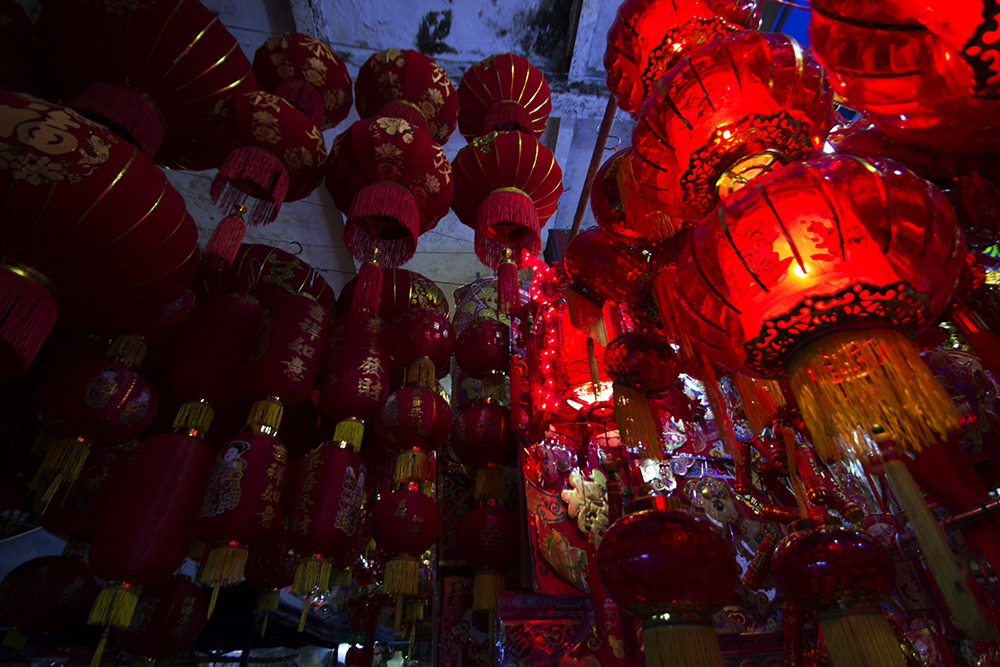
Preparations for Lunar new year.

Stalls and stalls of BBQ choices along 19th street in Chinatown

You could order whole fish freshly caught grilled on the spot to your liking at 19th St (known as Barbeque street). I avoided seafood completely on my Asia trip in case I got allergies or upset.

This was a shot from the small planes we took back to the capital city. The mountains looked crazy beautiful. Next time I come to Myanmar, I am definitely going off the beaten track and exploring the nature. I had never seen mountains like the ones I flew over before.
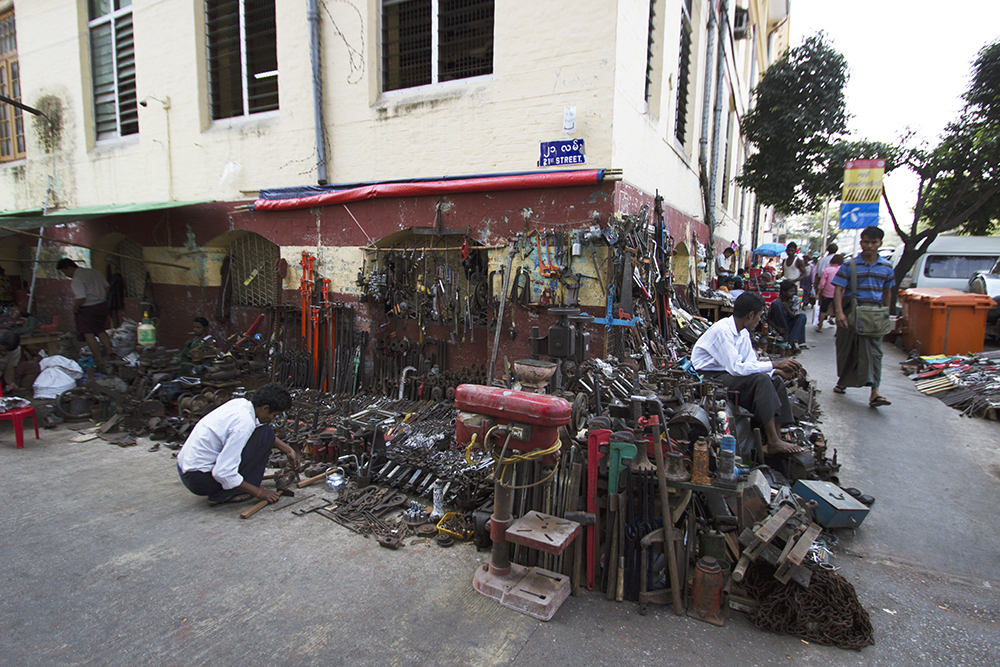
Flea markets were common along Anawratha Rd, where we also enjoyed amazing Indian cuisines. Also head to Feel restaurant in Yangon for authentic Myanmar cuisines which have waiters that help you along explaining what each dish is. Another recommendation we got but never tried was Monsoon restaurant. Those two restaurants were constantly recommended to us.

Hindu temple freckled with pigeons along the powerlines.

I loved Myanmar. Whenever I travel I kind of think, ‘Tick! That’s done – now onto the next place’ but with Myanmar I want to come back. I want to do more in the same place and extend the regions I travel to. The people were so friendly, so warm and so happy. Of course, that is what I only get to see being stuck in the more tourist friendly places. There is a huge elephant in the country and not the animal kind. The taboo of the government and military and the oppression that is occurring in other regions of Myanmar that is forbidden for a tourist to see. Hundreds and thousands run away as refugees and it is such a shame to see a country do that to their own people. With Myanmar being a unique place of many tribes, I wish I was able to experience them all.
I was even more saddened to hear that places are exploiting the refugees that ran away from war zones. I read about how many of the Kayan people ran away to the Thailand border where they were let in with open arms. Except they aren’t able to leave as they please anymore. Thailand recognised that these tribes which contain the long neck ladies, would encourage the tourism in Chiang Mai. I read stories about how the ladies had no idea how much Thailand was making off them doing day trips out to their villages. The ladies would just go about doing their own thing, some would get a little pocket money but others none. When New Zealand opened their doors to receive refugees, Thailand refused to classify them as refugees saying that they were cultural assets that belonged to Thailand rather than Myanmar. Many of the Kayan tribes that didn’t traditionally participate in the brass neck rings were granted passports and have since left to places like New Zealand and Canada. One girl decided she had enough and took off her brass neck rings. She was completely shunned and abused by Thai authorities as denying her culture and cheapening the tradition for the other ladies.
Many other refugees have been roped in by Thai factories to work in sweat shops as well. As Thailand switched their focus from agriculture to more industrial work – they needed people to fill in the bottom end jobs.
Some refugees struggle to go anywhere at all. The Rohingya Muslims in Rakhine estate, Myanmar are denied passports completely as Myanmar refuses to acknowledge them and are performing genocides to do a somewhat atrocious ‘ethnic cleansing’. They want to uphold the vision of the central government where Myanmar is a Burmese Buddhist country.
It comes even harder for the victims to receive foreign aid as the Western government has sanctions on Myanmar.
You can read into it more if you like – I’m obviously not entitled to present the stories, I just wanted to expose the situations at a shallow level. I just hope that one day, a country so beautiful will be able to share every facet of their culture and embrace multiculturalism with no danger imposed on anyone.
Comments are closed.